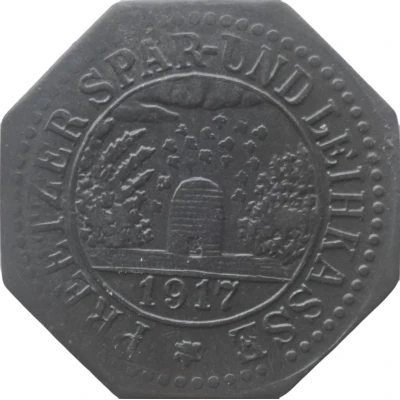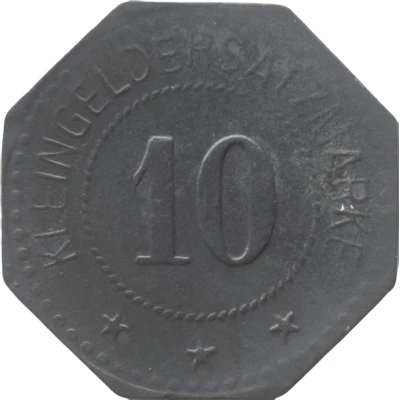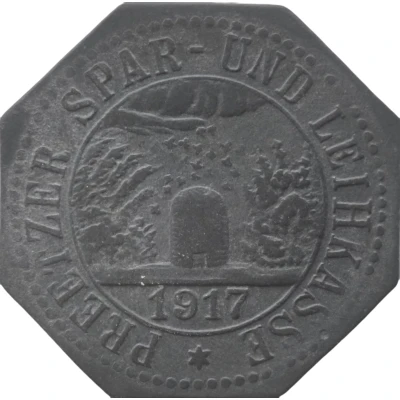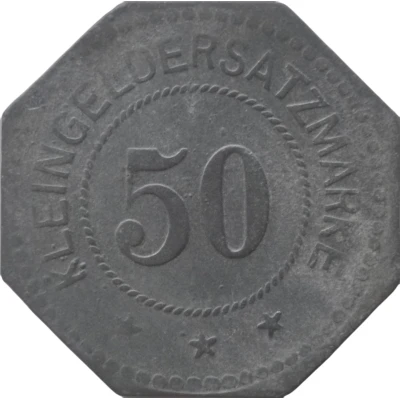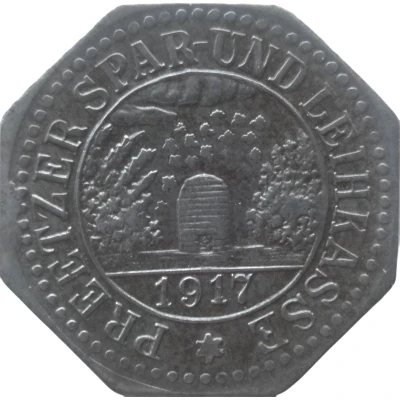
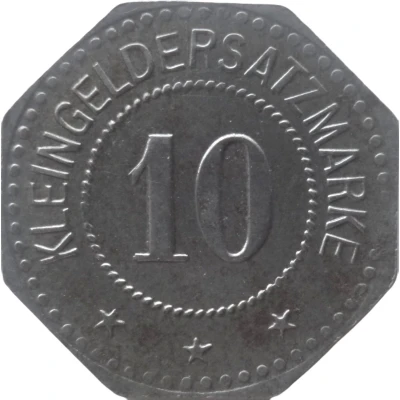

© Willem63 (CC BY-NC-SA)
10 Pfennigs - Preetz
1917 year| Iron | 2.6 g | 20.6 mm |
| Issuer | City of Preetz (Prussian province of Schleswig-Holstein) |
|---|---|
| Issuing entity | Preetzer Spar und Leihkasse |
| Emperor | William II (Wilhelm II) (1888-1918) |
| Type | Standard circulation coin |
| Year | 1917 |
| Value | 10 Pfennigs (10 Pfennige) (0.10) |
| Currency | Mark (1914-1924) |
| Composition | Iron |
| Weight | 2.6 g |
| Diameter | 20.6 mm |
| Thickness | 1.1 mm |
| Shape | Octagonal (8-sided) |
| Technique | Milled |
| Orientation | Medal alignment ↑↑ |
| Demonetized | Yes |
| Updated | 2024-10-04 |
| Numista | N#350114 |
|---|---|
| Rarity index | 97% |
Reverse
Pearl rim, legend surrounding rope circle with denomination centered
Script: Latin
Lettering:
KLEINGELDERSATZMARKE
10
★ ★ ★
Edge
Plain
Interesting fact
The 10 Pfennigs coin from Preetz (Prussian province of Schleswig-Holstein) made of Iron weighing 2.6 g is interesting because it was produced during a time of economic hardship and war effort in Germany. In 1917, Germany was facing a severe shortage of coins due to the ongoing World War I, which led to the government issuing emergency coins made of substitute materials like iron, zinc, and aluminum. The 10 Pfennigs coin from Preetz is one such example, and it's unique in that it was produced in a relatively small quantity compared to other emergency coins of the time. This coin serves as a reminder of the economic challenges faced by Germany during World War I and the resourcefulness of the people in finding ways to continue producing currency despite the difficulties.
